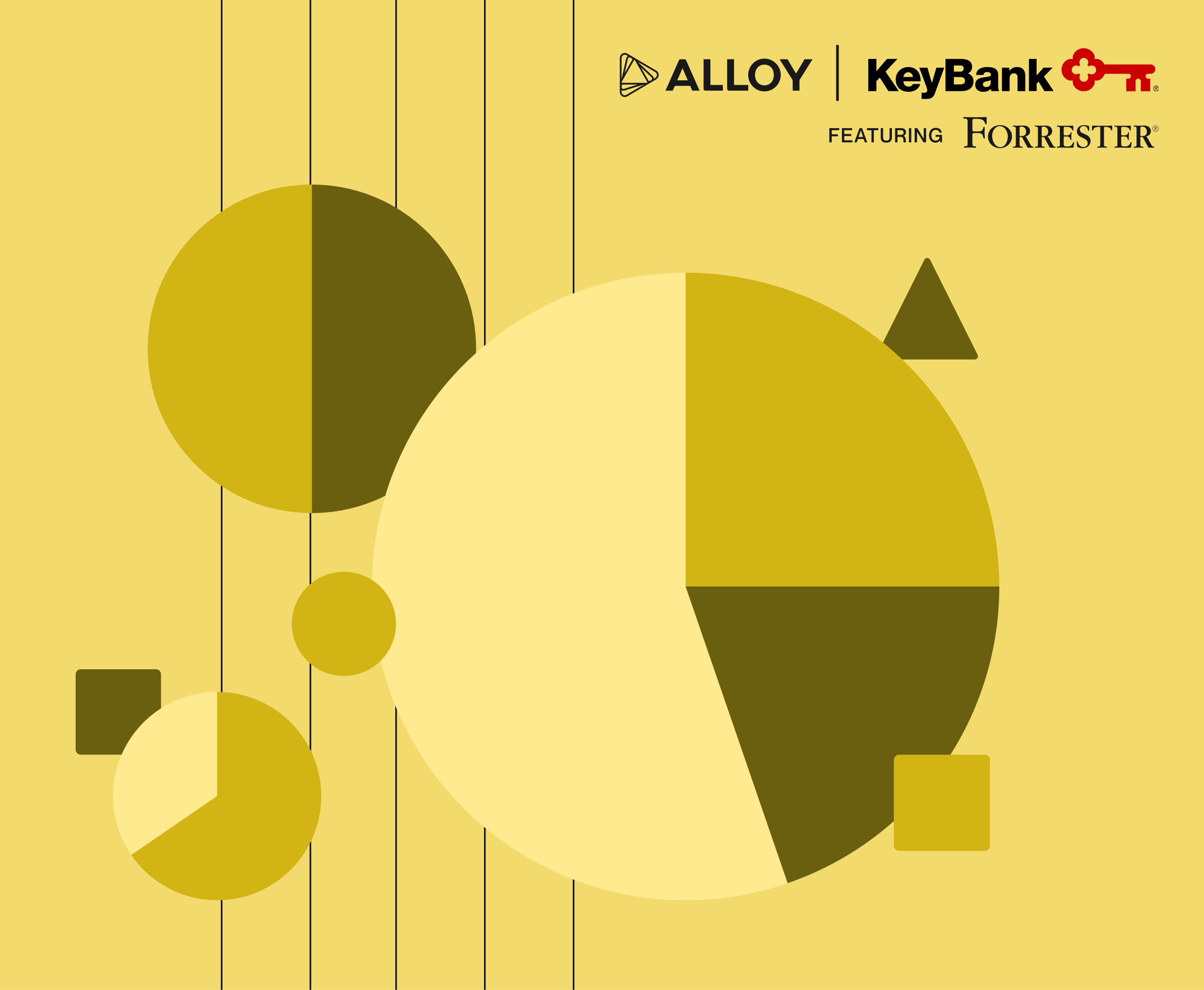Share
The great balancing act: fraud prevention and customer experience
Apr 26, 2022
Alloy CEO Tommy Nicholas and Jamie Warder, Executive VP & Head of Digital Banking at KeyBank, react to Forrester's study, The Identity Decisioning Imperative

Your fraud prevention practices can have significant implications on your customer experience. You can make it hard for bad actors to commit fraud, but are you slowing down — or even losing — some of your good customers? On the other hand, you can make an easy, breezy, beautiful customer experience, but is it too easy for fraudsters to sneak in?
The new fraud landscape
The pandemic has been championed as the driving force for digital banking, but it also drove an already booming fraud environment to new heights, with an estimated 10-15% increase in identity and account takeover fraud following the onset of COVID-19.
As a result, banks were left to figure out how to balance the rising customer demand for a seamless digital experience with the growing (and ever-changing) threat of fraud. In The Identity Decisioning Imperative, a report that we commissioned from Forrester earlier this year, we found that 64% of leaders at enterprise banks said a growing proportion of their customers expect fast, fully-digital experiences and 65% said that increasingly, fraudulent applicants are outmaneuvering their identity decisions.
Jamie Warder, Executive VP & Head of Digital Banking at KeyBank, recently joined our webinar to unpack the Identity Decisioning Imperative. He notes that while figuring out how to make things harder for fraudsters and easier for customers can be challenging, it should be a top priority for banks. "This is such a great balancing act. I say often, we can make identity fraud absolutely zero, you're just going to hate the customer experience that comes out of that. Conversely, we can have an amazing customer experience with zero friction, you're just not going to like your fraud and identity takeover numbers."
Are banks living up to these new challenges?
The stakes for fraud are getting higher than ever: a majority of decision-makers agreed that the related financial, reputational, and compliance risks associated with fraud are growing. And let’s be honest, many banks are having trouble living up to these new existential threats. Less than 50% of respondents surveyed said they believe their identity decisioning tools are very effective at account opening, credit applications, or investment accounts.
“This has big implications,” says Alloy co-founder & CEO Tommy Nicholas, “Organizations that are not confident in their identity, fraud & risk decisioning will fall back to manual and offline processes. It can turn into a cycle. Why is having confidence in your identity decisioning so tough? Fraud keeps changing, and the technology keeps changing, and then we lose confidence in what we’re doing — which leads to doing things manually and slowing down the customer experience.”
The industry’s dirty little secret?
We don’t want to scare Tommy, but the survey showed that around half of all “digital” account openings and credit applications are still not completely digital. Many organizations continue to funnel people out of the digital experience, whether talking to someone on the phone or going into a branch to complete their “digital” application. In 2022, can’t we do better? We may not have flying cars figured out yet (much to Marty McFly and Doc Brown’s surprise), but surely, we can create end-to-end digital onboarding experiences.
Three tips for better fraud prevention
Assess your current state. Ask yourself, if you needed to change the backend process for making a decision about a customer today, what are all the things from rule execution, getting new data, changing thresholds, etc., you would need? If you needed to change that today because of a new fraud attack, what’s the time to that being in production? Would it be a week? Would it be two weeks? Would it be two months? Would it be two years?
Focus on the human side of things. The “right” technology becomes even more powerful if you adjust how your teams work together. Your compliance, fraud, risk and customer experience teams can't work in silos. Get them in the same room to talk about what they’re seeing and how to approach the growing and ever-changing fraud landscape.
Upgrade your technology to move with fraud. Fraud isn’t a static ‘enemy.’ “Fraudsters are smart, strategic, tactical, and constantly moving.” says Jamie Warder. “Legacy banking systems are historically inflexible. So, when you’re trying to balance against this variability, with static-type defenses, you have to bring variability to this space, which is part of the reason we enjoy Alloy and what they can bring. Whatever is working today, is not going to work in the next month, in the next quarter, and we need the ability to flex and move as quickly as possible.” Tommy agrees, “In the fraud space, agility and flexibility is the whole game. The fraudsters are inherently going to change what they are doing. How quickly and efficiently you can respond to it is the whole thing.”





